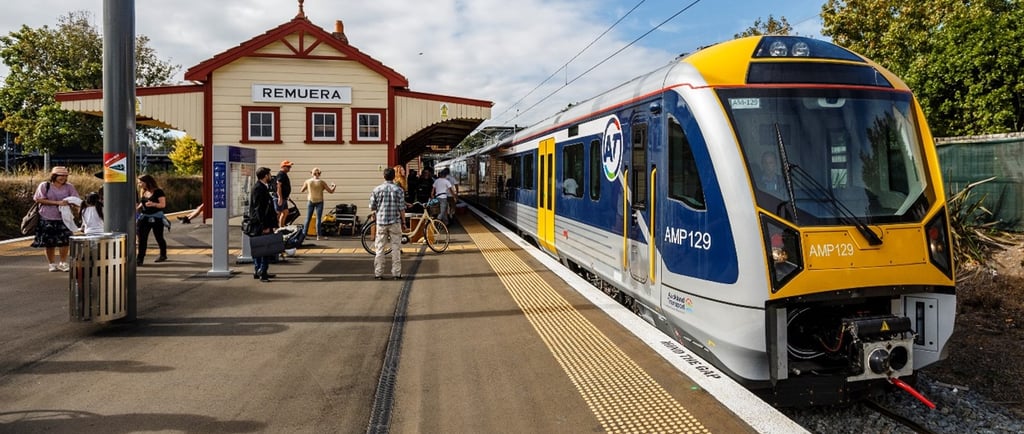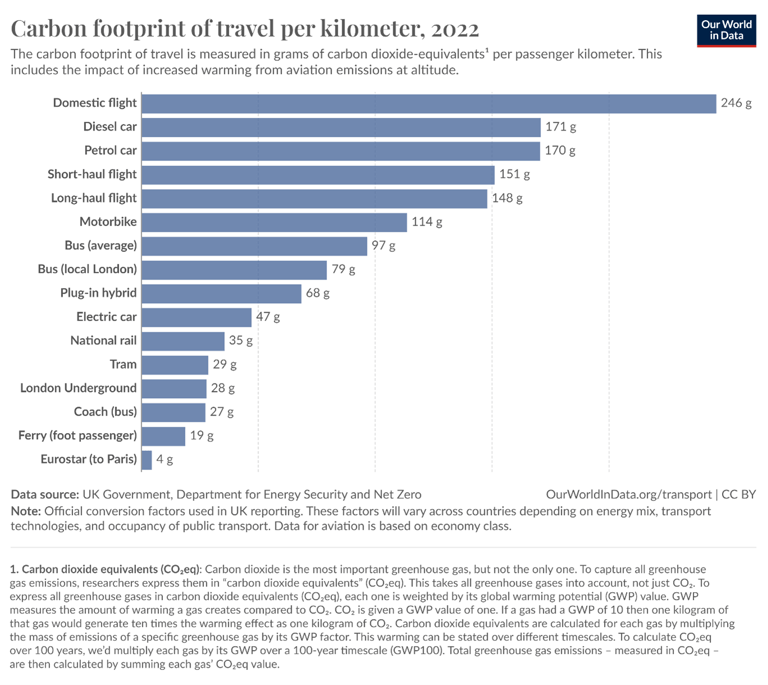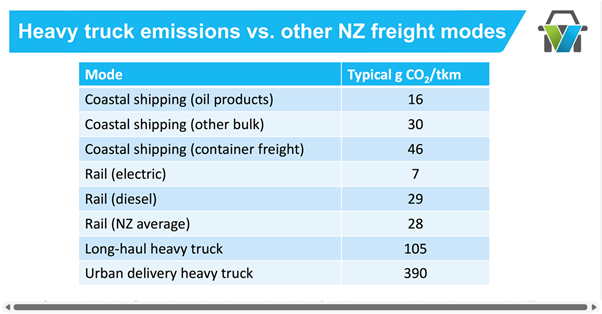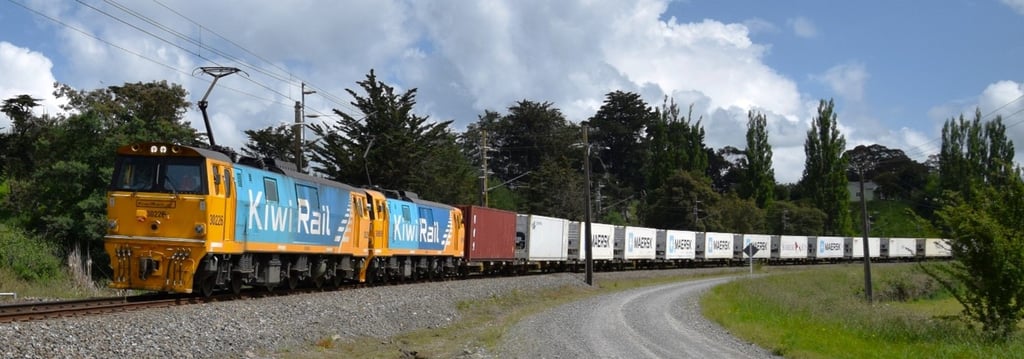Electric trains are the future for rail
Electrifying New Zealand’s transport slashes emissions, cuts fuel imports, and boosts productivity. Investing in renewable energy and electrified rail and transport creates a cleaner, connected, efficient, and more vibrant society.
THE FUTUREINFRASTRUCTURECLIMATE CHANGE
Paul Callister
1/6/20257 min read


Electrifying transport in Aotearoa New Zealand is essential to reduce emissions, decrease our dependency on imported fuels and improve productivity. To meet the needs of all New Zealanders, a full range of transport options are required. This includes electric bikes, electric scooters, electric buses, electric ferries, electric cars, electric trucks and electric trains – and, eventually, electric planes. All powered by renewable electricity, including solar.
The advocacy organisation Rewiring Aotearoa is to be congratulated for its well thought out and cleverly delivered messaging to encourage Kiwis to increase our investment in solar, whether on domestic roofs, on farms or on businesses. Particularly promoted as a win-win for households is installing solar panels on houses and replacing fossil fuel cars with an EV.
But as some commentators have pointed out, replacing fossil fuel cars with EVs is only part of the answer for decarbonising transport.
Researchers into sustainable energy also point out that not only is it important to invest in renewable electricity but it is vital to seek energy efficiency gains wherever possible. Rail is an extremely energy efficient way to move goods and people.
Investing in longer distance freight and passenger trains, powered by renewable electricity including solar power, is a critical step in moving to a modern high productivity, socially connected, low emission society. It will be a win-win for the nation and for the planet.
Electrified passenger rail
Rail networks can revolutionize connectivity, acting to bridge the gaps between our rural and small urban areas as well as between our largest cities. A world where residents of all our communities have ease of access to employment opportunities, education, healthcare, and cultural centres located in larger urban areas. The expansion of existing passenger rail networks will act as lifelines that serve to bring all communities closer, in a comfortable safe way, eliminating the barriers of distance.
Many Kiwis are either unable to drive or choose not to. With an aging population, especially in small towns, the number of New Zealanders unable to drive will increase. For longer distance trips, for example Tauranga to Auckland, Wellington to Napier or Christchurch to Dunedin, reviving passenger rail would provide more travel options.
In large urban areas, switching from cars to public transport or biking reduces congestion, reduces emissions and improves public health outcomes.


Electrified rail freight
Research funded by the Ministry of Transport shows the clear advantages of electrified rail freight in terms of reducing emissions.


Table is from a 2019 MOT Study titled ‘Real-world fuel economy of heavy trucks:
Coastal shipping figures based on international data for ships comparable to those used in NZ
Rail figures based on data provided by Kiwirail; electric includes indirect emissions
Expanding our electrified rail network
Many countries have already invested in electrified railways. Wikipedia notes:
"As of 2012, electrified tracks accounted for nearly one third of total tracks globally.
As of 2023, the Swiss rail network is the largest fully electrified network in the world and one of only eleven countries or territories to achieve this…The percentage then continues falling in order with Laos, Montenegro, India, Belgium, Georgia, South Korea, Netherlands, and Japan, with all others being less than 75% electrified. Overall, China takes first place, with around 100,000 km (62,000 mi) of electrified railway, followed by India with over 60,000 km (37,000 mi) of electrified railway, and continuing with Russia, with over 54,000 km (34,000 mi) of electrified railway."
Alpha Rail, a New Zealand company working on overhead line electrification design and construction, outlines the many benefits of electrified rail.
"Electric trains have many great benefits over their diesel-powered competition. The most obvious positives offered by electric trains are their reduced environmental impacts. Electric trains draw all their power from the grid and are therefore a lot more environmentally friendly when compared to the pollution produced by diesel-powered engines.
Additionally, electric trains also produce a fraction of the noise pollution compared with diesel trains – which is a benefit for both those on and outside the train. If you haven’t had an opportunity to travel on an electric train yet, a good way to picture the difference is to consider the noise of a normal petrol or diesel vehicle compared with the quiet offered by a modern electric car.
Costs are another significant decision-making factor when comparing electric and diesel trains. The cost per kilometre for electric trains is over 50% cheaper than diesel trains when measured according to fuel intake and maintenance costs.
Another significant benefit to electric trains is their speed. According to an Auckland Transport technical summary, electric and diesel trains run at the same maximum speed of 110 kilometres per hour. However, electric trains accelerate and brake twice as fast as their competition. To illustrate the practical benefits of this, the 34-kilometre journey from Auckland to Papakura is 10 minutes quicker by electric train compared with their diesel-powered counterparts."
In New Zealand, the Auckland and Wellington metro lines are fully electrified, as is the portion of the main trunk line through the central North Island. The central North Island section of electrification was under threat in 2016 when KiwiRail announced it was going to replace its aging electric locomotives with diesel trains. However, a campaign lead by Roger Blakeley saw this decision reversed and the locomotives have been upgraded.
But our busiest freight line is from Auckland to the port of Tauranga. Most of this line is not electrified. However, there are studies now being undertaken on how to electrify trains on this railway.
Near the end of 2024 KiwiRail invited tenders to undertake further study of options for using electric trains on this line. This includes using battery powered trains, perhaps in combination with overhead lines on part of the route.
"KiwiRail is undertaking investigations to decarbonise freight operations in the Golden Triangle (Auckland-Hamilton-Tauranga) in response to New Zealand’s legislated greenhouse gas emission reduction goals. Work completed to date has identified that using electric locomotives is the most effective and efficient way to help decarbonise rail’s part of the transport supply chain (either with overhead wires, batteries, or a hybrid)."
Given rapid technological change, it is important to consider all electric options. The world’s first electric battery powered locomotive is being tested in Australia while battery powered passenger trains, often hybrids, are being tested in a number of countries.
Back in 2018, a Greater Auckland blog discussed the future of battery trains, including showing that New Zealand had a battery powered railcar as early as 1926.
Battery powered passenger trains, most likely hybrid, are being ordered for the Lower North Island Mobility Project with the new trains to run between Wellington and Palmerston North and Masterton.
While electrification of the Tauranga route is especially important for freight, it will be the key to bringing back passenger trains to Tauranga from Auckland and Hamilton. Electrification will increase capacity through the Kaimai tunnel. Movements through the tunnel are currently restricted post the Pike River disaster to operating one hour after diesel trains pass through, therefore current time slots are almost zero for passenger rail.
A big issue is capacity constraints within the Auckland metropolitan rail network. These challenges mean that the Hamilton-Auckland Te Huia train service for example, is slower than railcar services of 30 years ago. However, the Auckland Rail Network Programme Business Case proposes an early 2030s completion of 4-tracking between Wiri and Pukekohe. That will go a long way towards addressing speed and congestion, on the Auckland network. Further information is available here:
Of key interest are Appendices G and H: Options Development Report Parts 1 and 2.
It is time to bring back the Kamai Express linking the fast-growing areas of Tauranga, Hamilton and Auckland, especially South Auckland, and when it returns it will be electric powered.
In terms of freight, adding the third leg of a triangle at Frankton allows for direct electric freight trains to operate from Port of Tauranga to Palmerston North gaining the port direct access to lower North Island freight markets.
The Future is (Electrified) Rail
In summary electric trains:
Are very energy efficient which can be translated into productivity gains for businesses and individuals.
Have a very low emissions footprint helping us reduce transport emissions.
Reduce our reliance on imported fuels.
Are cheaper to run than diesel powered trains.
Are fast and quiet.
But these gains will only come about if there is investment in rail networks and the trains, both passenger and freight, that run on them.
South East Queensland in our neighbour Australia provides a great case study in how an electric rail spine network can connect the region that spans 235km from the Sunshine Coast in the north to the Gold Coast in the south, with a busy metro commuter network operating within Greater Brisbane in-between. While the region is now home to 4 million people, the population was 1.9 million when the Gold coast line commenced construction in 1991.
By way of comparison, the current population for the main centres within the Golden Triangle (Auckland-Hamilton-Tauranga) rail corridor of similar ~230km distance is as follows –
Auckland:1.716 million
Greater Hamilton: 241,000
Greater Tauranga:162,000
The rough total of 2.1 million is more than enough to begin planning and funding electrification for the Golden Triangle rail corridor right now.
A feature of South East Queensland, in often stark contrast to even the Auckland-Waikato-Bay of Plenty regions within Aotearoa New Zealand, is the strength and consistency of economic growth over the decades since Queensland made the decision to invest heavily infrastructure, including electric rail. While Queensland has had a multi-decade coal commodities boom, it could be similarly argued that Auckland-Waikato-Bay of Plenty regions have benefitted from a multi-decade dairy boom.
The economic value proposition of the SE Queensland economy is compelling. This is based on a diversity and vibrancy of lifestyles, jobs, industry, housing, including as a subset of the larger economy, an important role for real estate. That is why 208,000 people born in New Zealand, call South East Queensland home.
While the naysayers talk down regional passenger rail in New Zealand, South East Queensland, is a great demonstration of how affordable housing (of many mixed types from large standalone sections to apartments), and a "ute based" lifestyle very recognisable to kiwis, has all been able to be accommodated, linked by road investments, and crucially; a low user cost, high economic value, electric rail corridor.
Members of The Future is Rail travelling in South East Queensland praise the low fares, the well-connected train, tram, bus and ferry network, celebrate the popularity of the services, and ask: why not embrace an electric rail future in the Auckland-Waikato-Bay of Plenty regions?


